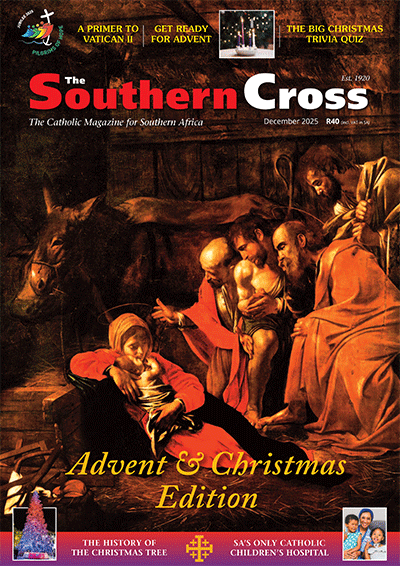Mary Magdalen – The essential history
MARY MAGDALEN: The Essential History, by Susan Haskins. Random House, Houghton. 2006. 518pp.
Reviewed by G�nther Simmermacher
 Mary of Magdala has been the subject of so much misinformation over centuries � by the Church itself and more recently by creators of fiction like Dan Brown � that we don�t know this pivotal figure in the life of Jesus at all. Susan Haskins in this revised version of her acclaimed 1993 book tries to correct this.
Mary of Magdala has been the subject of so much misinformation over centuries � by the Church itself and more recently by creators of fiction like Dan Brown � that we don�t know this pivotal figure in the life of Jesus at all. Susan Haskins in this revised version of her acclaimed 1993 book tries to correct this.
Haskins has very little source material to work with. Dispose of all the traditions and myths associated with Mary Magdalen, and you are left with a few lines in the gospels that reveal that she was a woman of independent means who accompanied the Nazarene and his band of followers on their itinerant way, supporting them materially.
We know that she had suffered from demonic possession or a mental condition which Jesus healed, and was held in high esteem by him. Famously she was in the group that had the fortitude to see Jesus die on the cross, and was the first person to encounter the risen Christ.
In the very early Church, Haskins writes, women played an egalitarian role. Some, such as Phoebe (Rom 16:1-2), were leaders in their own right, much to the disgust of pagan commentators and in stark contrast to the passive role of women in Judaism.
Haskins speculates that criticism from outside contributed to the relegation of women in leadership positions in the young Church within just one generation of St Paul. As the early Church moved to diminish the influence of women within it, so did Mary Magdalen�s key position among Christ�s first disciples become diluted.
The character assassination that would shape her reputation for the next 14 centuries came in Pope Gregory the Great�s famous homily on Luke�s Gospel in 591. In it he falsely identified Mary as the unnamed repentant sinner (by now regarded as a prostitute) of Luke 7: 36-50 to create an example of true atonement and conversion.
Thus, Haskins argues, Mary Magdalene was �transformed� from Apostle of the Apostles to �redeemable whore� and an �effective weapon and instrument of propaganda against her own sex�.
Only in the 20th century was Pope Gregory�s creative reading of the Gospel discounted as �exegeticallly untenable�. As Haskins shows, scholarly attempts to prove it so in earlier times were, charitably put, not welcome.
She goes on to outline in forensic detail how various traditions about Mary Magdalen�s life after meeting the Risen Lord (for at this point the New Testament bids her farewell) came about.
These took off with spectacular disregard for fact or reason in the 13th century, a time when the saints where the equivalents to the movie stars of our age.
By then, the popular image of Mary Magdalen, in addition to her verifiable identity as leading disciple, had taken on not only the persona of the anonymous �prostitute�, but also fully incorporated the quite distinct Mary of Bethany, Martha�s sister who washed Christ�s feet with her tears.
The tri-part Mary Magdalen was a superstar among the saints, commanding a whole genre of (mostly nudist) art for herself, and influencing the likes of Bridget of Sweden and Catherine of Siena.
The medieval view saw the Magdalen as representative of all women, who were responsible for the Fall through Eve. Mary became the standard for a (false) model of women repenting for the sins the medieval Church saw as intrinsic to their gender � fornication and lust, even if only latent, chief among them. In that view, all women were temptresses who simply by being women incited men to entertain lustful thoughts. All sexuality was their �fault�. Curiously, the Church argued the necessity of prostitution to protect the modern Adam from falling victim to his own lechery.
Haskins� discourse on the role of women and the theological judgment of marriage as inferior to celibacy in the early and medieval Church in particular invite further reading.
This dense and meticulous scholarly history of Mary Magdalen is by necessity heavy-going at times. Yet the narrative finds light relief in several enormously entertaining digressions, such as the medieval travails of the French abbey of V�lasquez, which claimed to hold the authentic bones of the saint, with much peculiar associated goings-on in the pursuit of power and money, only to be eclipsed by another abbey�s authentic Mary Magdalen bones and a proliferation of bogus relics matched only by the forest-worth of �pieces of the True Cross�.
It is perhaps in the nature of biblical history that it should require 500-plus pages to unravel the myths that were cultivated over the centuries to arrive at the elementary and brief vita of Mary Magdalen we already know: those few passages in the gospels.
The journey to that point, however, illuminates the history of the Church, particularly its gender politics. And this makes Mary Magdalen: The Essential History an invaluable addition to one�s religious library.
- The Chosen’s Mother Mary: I loved washing Jesus’ hair - December 5, 2025
- Book Review: Benedict, Baltimore and the Barbary Pirates - December 4, 2025
- Christmas Began in July - December 1, 2025





